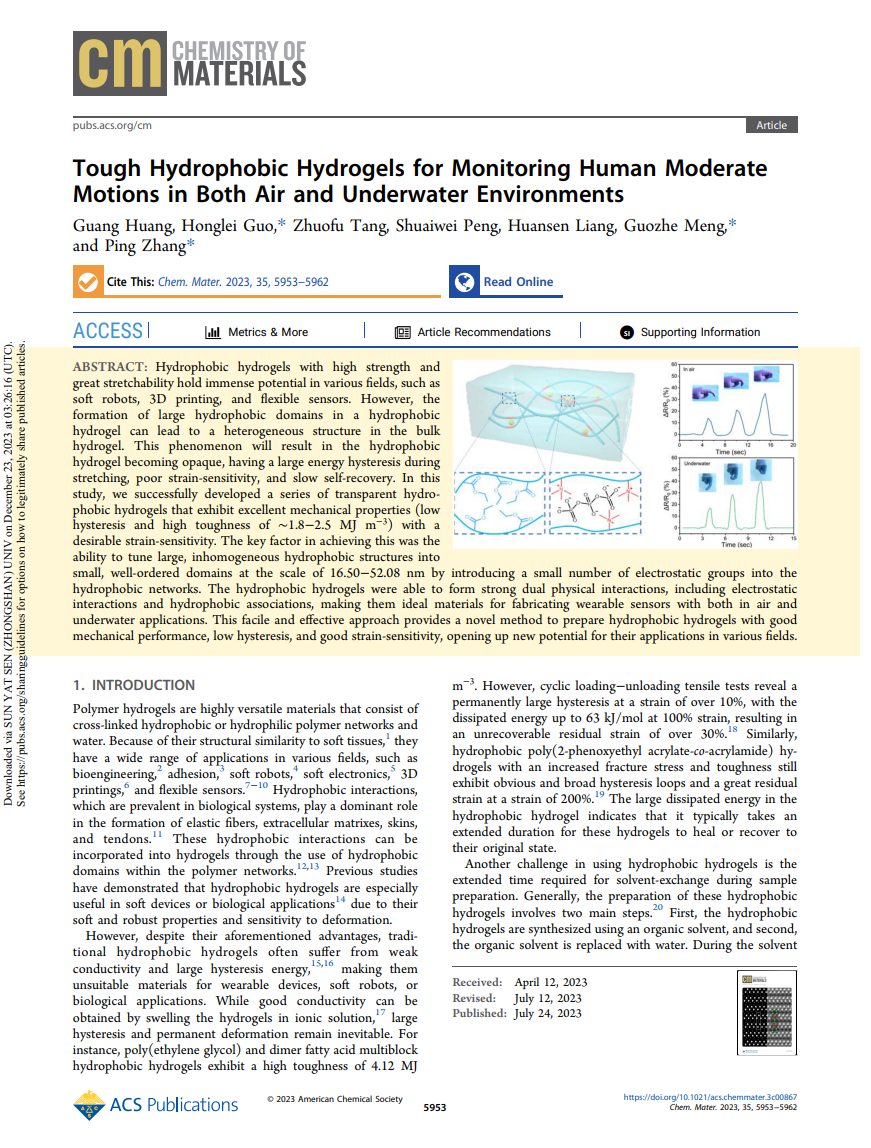Hydrophobic hydrogels with high strength and great stretchability hold immense potential in various fields, such as soft robots, 3D printing, and flexible sensors. However, the formation of large hydrophobic domains in a hydrophobic hydrogel can lead to a heterogeneous structure in the bulk hydrogel. This phenomenon will result in the hydrophobic hydrogel becoming opaque, having a large energy hysteresis during stretching, poor strain-sensitivity, and slow self-recovery. In this study, we successfully developed a series of transparent hydrophobic hydrogels that exhibit excellent mechanical properties (low hysteresis and high toughness of ∼1.8−2.5 MJ m−3 ) with a desirable strain-sensitivity. The key factor in achieving this was the ability to tune large, inhomogeneous hydrophobic structures into small, well-ordered domains at the scale of 16.50−52.08 nm by introducing a small number of electrostatic groups into the hydrophobic networks. The hydrophobic hydrogels were able to form strong dual physical interactions, including electrostatic interactions and hydrophobic associations, making them ideal materials for fabricating wearable sensors with both in air and underwater applications. This facile and effective approach provides a novel method to prepare hydrophobic hydrogels with good mechanical performance, low hysteresis, and good strain-sensitivity, opening up new potential for their applications in various fields.
